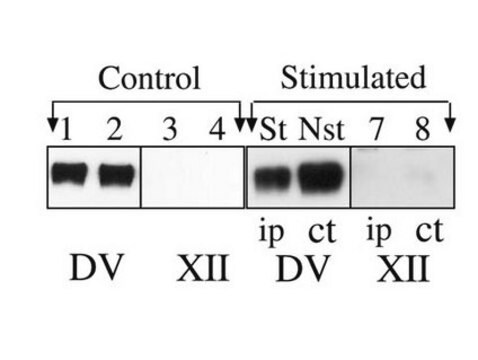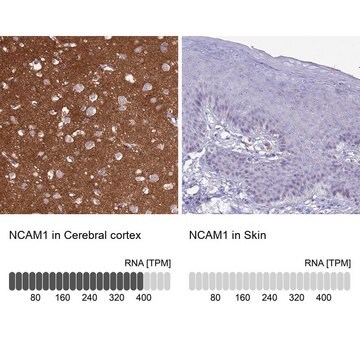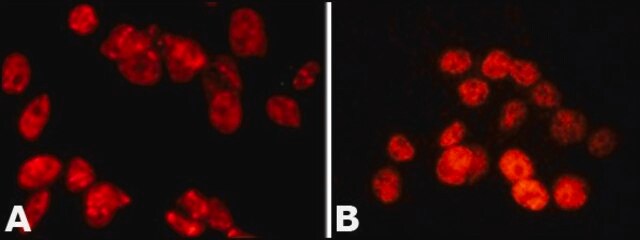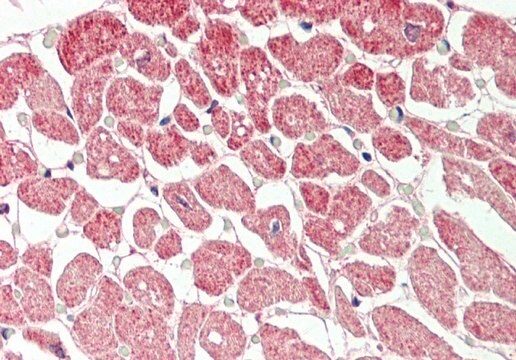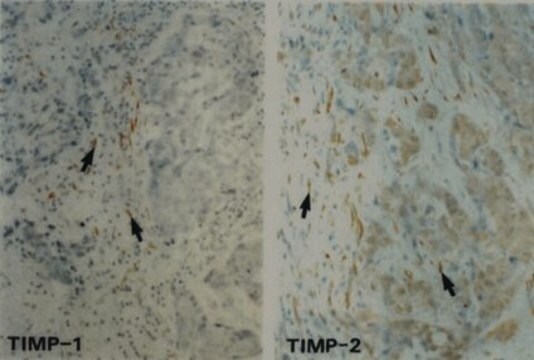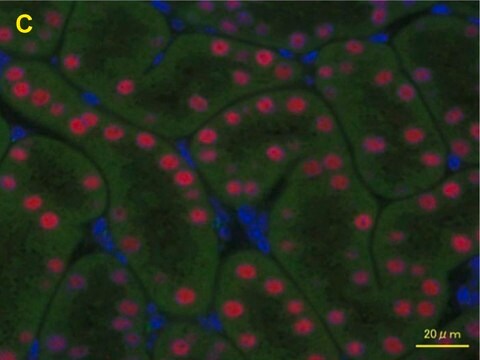MAB3507
Anti-Caspase 2 Antibody, clone 11B4
clone 11B4, Chemicon®, from rat
Synonim(y):
ICH-1
About This Item
Polecane produkty
pochodzenie biologiczne
rat
Poziom jakości
forma przeciwciała
purified antibody
rodzaj przeciwciała
primary antibodies
klon
11B4, monoclonal
reaktywność gatunkowa
mouse, monkey, human, canine
producent / nazwa handlowa
Chemicon®
metody
ELISA: suitable
flow cytometry: suitable
immunoprecipitation (IP): suitable
western blot: suitable
izotyp
IgG2a
numer dostępu NCBI
numer dostępu UniProt
Warunki transportu
wet ice
docelowa modyfikacja potranslacyjna
unmodified
informacje o genach
human ... CASP2(835)
Powiązane kategorie
Specyficzność
Immunogen
Zastosowanie
Apoptosis & Cancer
Metabolism
Caspases
Enzymes & Biochemistry
Immunoprecipitation: Recommended concentration 1-5 μg/ml FACS: Recommended concentration 1 μg/ml. It is necessary to permeabilize the cell membrane prior to analysis.
EIA: Recommended concentration 0.5-1 μg/ml.
Immunohistochemistry: Use at 10-20 μg/ml. It is necessary to fix the cells in 4% Paraformaldehyde/0.18% Triton-X100 for 10 minutes prior to staining.
Optimal working dilutions must be determined by end user.
Powiązanie
Postać fizyczna
Przechowywanie i stabilność
Inne uwagi
Informacje prawne
Oświadczenie o zrzeczeniu się odpowiedzialności
Nie możesz znaleźć właściwego produktu?
Wypróbuj nasz Narzędzie selektora produktów.
Kod klasy składowania
12 - Non Combustible Liquids
Klasa zagrożenia wodnego (WGK)
WGK 2
Temperatura zapłonu (°F)
Not applicable
Temperatura zapłonu (°C)
Not applicable
Certyfikaty analizy (CoA)
Poszukaj Certyfikaty analizy (CoA), wpisując numer partii/serii produktów. Numery serii i partii można znaleźć na etykiecie produktu po słowach „seria” lub „partia”.
Masz już ten produkt?
Dokumenty związane z niedawno zakupionymi produktami zostały zamieszczone w Bibliotece dokumentów.
Nasz zespół naukowców ma doświadczenie we wszystkich obszarach badań, w tym w naukach przyrodniczych, materiałoznawstwie, syntezie chemicznej, chromatografii, analityce i wielu innych dziedzinach.
Skontaktuj się z zespołem ds. pomocy technicznej


